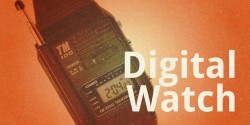A number of prominent musicians have complained loudly about the royalties they receive from streaming music services like Spotify and Pandora, from indie rock veteran David Lowery to pop star Taylor Swift, who pulled all of her music from Spotify. Mike Masnick at TechDirt decided to look closer at the numbers and determined that “Yes, major record labels are keeping nearly all the money they get from spotify, rather than giving it to artists.”
This pie chart of after-tax payouts shows the situation pretty graphically:
Masnick aims his criticisms at the labels, which he notes don’t encur the costs of manufacturing vinyl and plastic discs that then need to be shipped around the world. With Spotify or Pandora, “distribution is an ‘upload’ button.” I find it kind of hard to argue with that logic, not that I was ever a fan of the major labels to begin with.
Speaking of streaming music services,Pandora reported its 2014 fourth quarter and year-end earnings. The company says it paid out $439 million in royalties last year, on $920.8 million of revenue, $732.3 of which came from advertising. That made for a profit of $58.2 million. Alas, those numbers were below expectations and the stock dipped on the news.
The company also says it now surpasses 1 billion streams a day on occasion, and has a whopping 79.2% of the internet radio market.
That share of the market pretty well dwarfs every major broadcaster, not that the commercial radio industry in the US has worked all that hard to establish a strong online service. iHeartRadio is the most prominent, though it’s kind of a hodge-podge that is primarily known for offering up streams of its terrestrial stations, which aren’t exactly rocketing the company to profit in the first place.
Radio industry analyst and consultant Mark Ramsey published an incisive guide on “how to monetize your online radio streams.” Pretty much all of his points are spot-on and apply equally well to non-commercial community, college or public stations as well, whether or not the goal is to generate revenue.
For commercial stations advice like “cut the (commercial) spot loads to a maximum of half of what you do via broadcast,” is utterly obvious when you compare the Pandora listening experience to any given commercial station. Yet, this is one of the only times I’ve read this tip.
Commercial and non-commercial stations alike should heed strategies like “create channels that stream on-demand content in a loop all day long,” and “use a robust podcast engine to cut up, catalog and distribute short-form audio.” The idea is that a station’s web site should do everything possible to help listeners find and access programming without being tied to the broadcast schedule. Stations that only serve up a live stream of the terrestrial signal are squandering 90% of the advantages the internet offers over and above the AM or FM broadcast.
Read the whole piece to get all seven of Ramsey’s excellent tips.
Finally, for stations that do generate revenue from their online streams, one persistent challenge is getting reliable ratings that advertisers trust as well as traditional broadcast audience numbers from Nielsen (formerly Arbitron). Today WideOrbit announces that Nielsen has certified its Clarity online radio streaming platform, making it the first one to receive such a certification.
Along with live and on-demand audio streams, Clarity does what is called ad insertion, allowing internet broadcasters to place ads in their internet streams that may be different from the broadcast, or even differentiated by other factors, like a listener’s location or the time of day.
With the Nielsen certification stations that use Clarity will be able to offer ratings for online programs that look more like ratings for terrestrial broadcast. While I have long-standing criticisms of radio ratings, I also understand how it’s important to have an ostensibly neutral third-party say audience numbers are reliable. It’s just that, especially in broadcast radio, I wish there were competition. At least with online radio and audio there is another company, Triton Digital, providing audience measurement, too.



